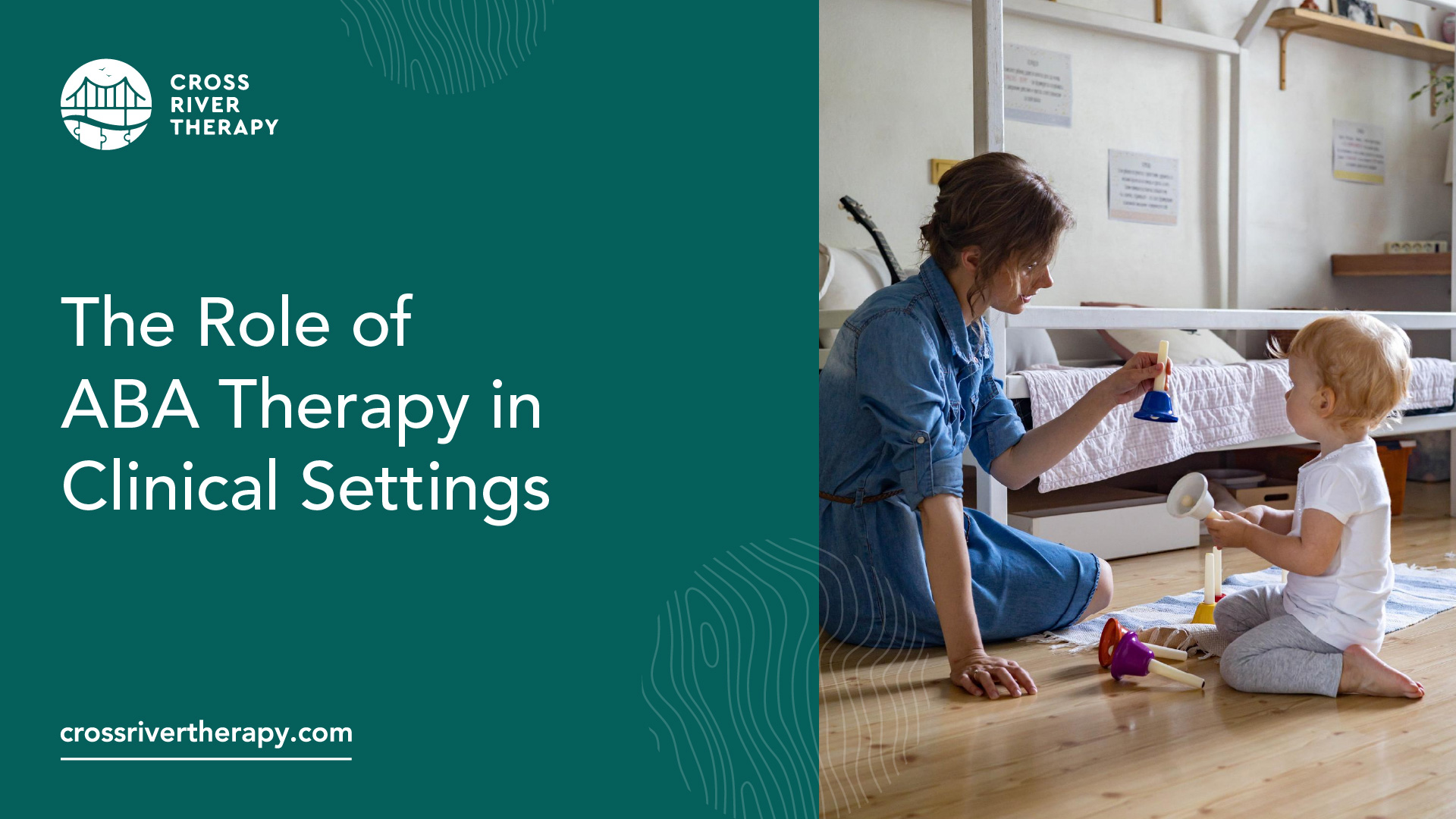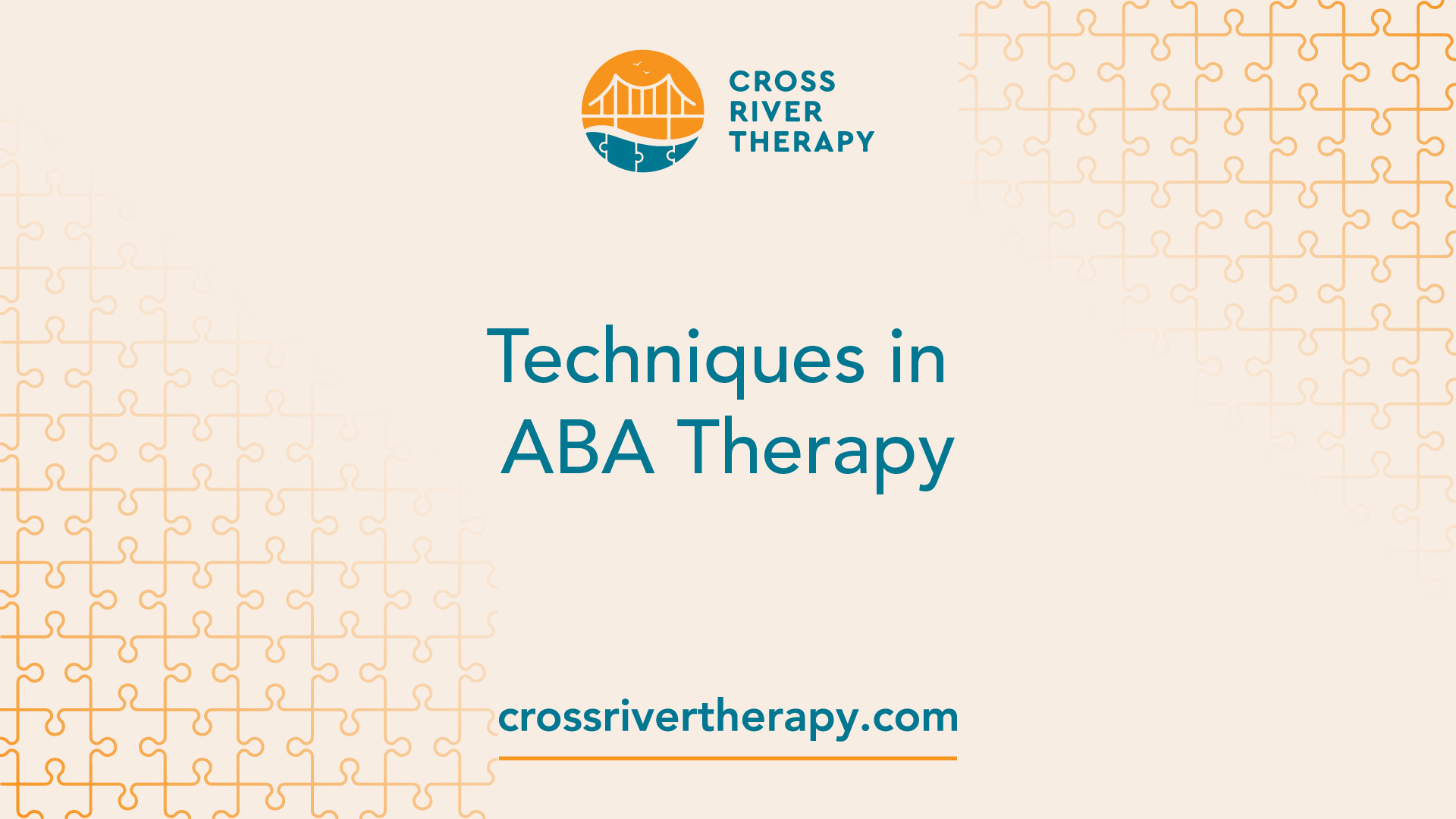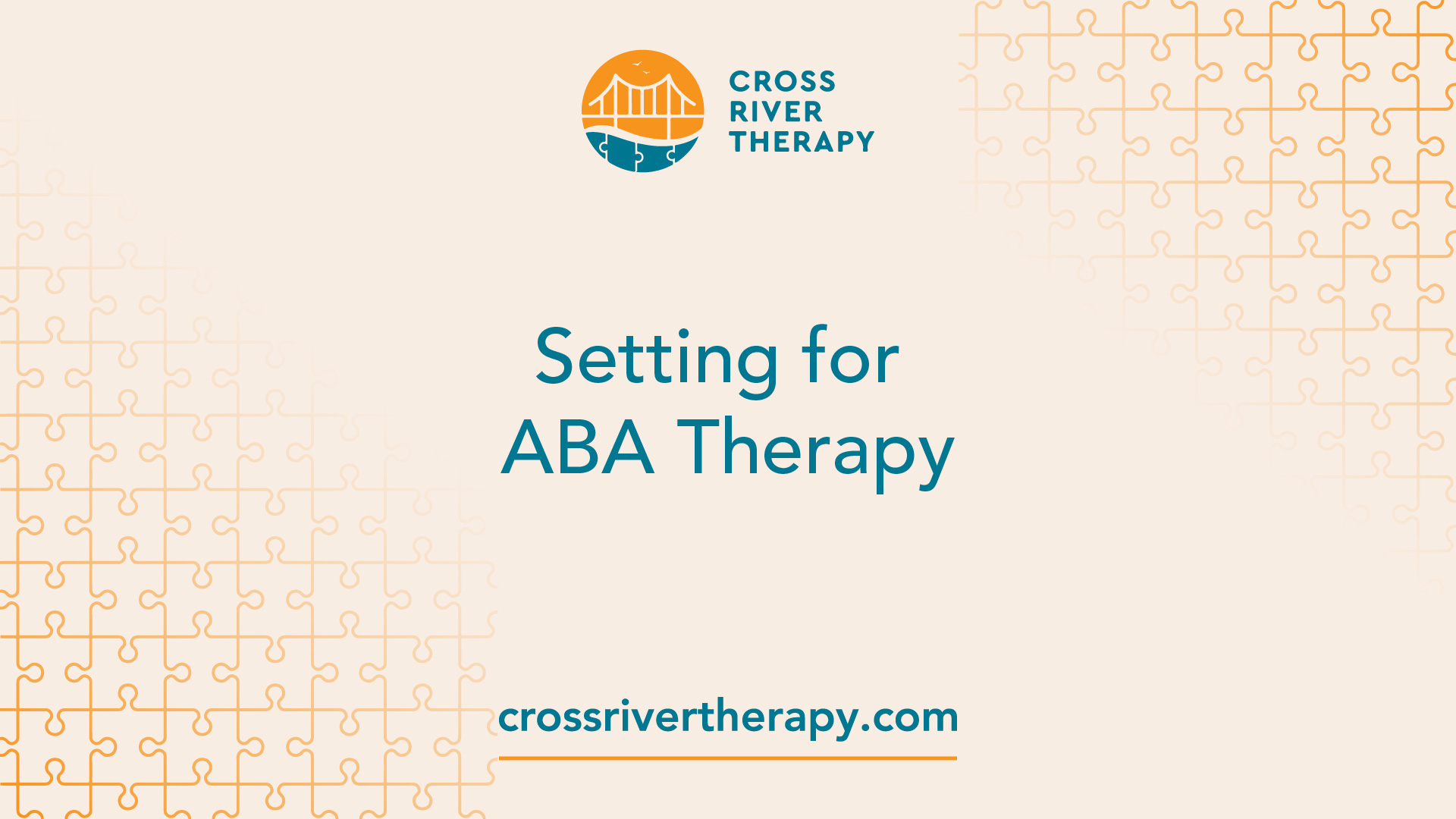The Role of ABA Therapy in Clinical Settings
Explore how ABA therapy is applied in clinical settings to support behavioral improvements and skill development."

Understanding ABA Therapy
ABA therapy, short for Applied Behavior Analysis therapy, is a widely recognized and effective approach for helping children with autism and related developmental disorders. This section will provide an overview of the history of ABA therapy and introduce the key players involved in delivering this type of therapy.
History of ABA Therapy
Therapists have been using ABA to help children with autism and related developmental disorders since the 1960s. Over the years, this therapeutic approach has evolved and gained recognition for its effectiveness in improving behaviors, communication skills, social interactions, and overall quality of life for individuals with autism.
ABA therapy is rooted in the principles of behaviorism, which focus on understanding how specific behaviors are learned and how they can be modified through systematic interventions. By breaking down complex skills into smaller, manageable steps, ABA therapy helps individuals with autism learn and develop new skills in a structured and systematic manner.
Key Players in ABA Therapy
ABA therapy programs involve a team of professionals who work collaboratively to deliver effective interventions. The key players in ABA therapy include:
- Board-Certified Behavior Analyst (BCBA): A BCBA is a highly trained and qualified professional who specializes in designing and overseeing ABA therapy programs. They have in-depth knowledge of behavior principles and strategies, and they create individualized treatment plans based on the unique needs and goals of each child. BCBA certification ensures that the therapist has met the rigorous standards set by the Behavior Analyst Certification Board.
- Therapists (Registered Behavior Technicians - RBTs): Therapists, also known as Registered Behavior Technicians (RBTs), are trained and supervised by the BCBA. They play a crucial role in implementing the ABA therapy programs designed by the BCBA. RBTs work directly with the child, providing one-on-one therapy sessions, collecting data, and assisting with behavior management.
The collaboration between the BCBA and the therapists ensures that ABA therapy is delivered with expertise and consistency, maximizing the effectiveness of the interventions. The BCBA provides ongoing supervision and guidance to the therapists to ensure the therapy is tailored to the specific needs and progress of each individual.
ABA therapy is considered an evidence-based best practice treatment by the US Surgeon General and the American Psychological Association. It has been extensively studied and proven effective in helping individuals with autism develop essential skills and improve their overall functioning [2]. The endorsement of multiple organizations, including Autism Speaks and the Association for Behavior Analysis International, further solidifies the credibility of ABA therapy as an evidence-based approach.
In the following sections, we will explore the benefits, components, techniques, settings, and goals of ABA therapy to provide a comprehensive understanding of this valuable treatment option for individuals with autism.
Benefits of ABA Therapy
ABA therapy, short for Applied Behavior Analysis therapy, has been recognized as an effective intervention for individuals diagnosed with autism spectrum disorder (ASD). This section will explore the effectiveness of ABA therapy and its target audience.
Effectiveness of ABA Therapy
Numerous studies have demonstrated the effectiveness of ABA therapy in improving outcomes for many children with autism. According to Autism Speaks, more than 20 studies have established that intensive and long-term therapy using ABA principles leads to significant gains in intellectual functioning, language development, daily living skills, and social functioning. Programs providing 25 to 40 hours a week of therapy for 1 to 3 years have shown positive results. It is important to note that while ABA therapy is beneficial for many individuals with autism, it may not be effective for everyone.
ABA therapy is considered an evidence-based best practice treatment by the US Surgeon General and the American Psychological Association. It has passed scientific tests of its usefulness, quality, and effectiveness, making it a recognized and respected therapeutic intervention [1]. ABA therapy is a well-studied scientific discipline with over 50 years of research supporting its effectiveness.
Target Audience for ABA Therapy
ABA therapy is commonly practiced as a therapeutic intervention for individuals with autism. It is most successful when applied intensely, typically involving 25 to 40 hours of therapy per week for an extended period. Early intervention is key, as studies have shown that starting ABA therapy prior to the age of 4 can lead to significant improvements in social interactions, skill development, and positive behavior maintenance.
While ABA therapy is primarily associated with individuals on the autism spectrum, it has also been effective in treating other conditions such as developmental delays and traumatic brain injury. The tailored and individualized nature of ABA therapy allows it to address a wide range of challenges and behaviors, making it suitable for individuals with diverse needs.
In summary, ABA therapy has been proven effective in improving outcomes for many individuals with autism and other related conditions. Its evidence-based approach, combined with intensive and early intervention, offers significant benefits in various areas of development. ABA therapy is a valuable resource for individuals seeking to enhance social interactions, learn new skills, and maintain positive behaviors.
Components of ABA Therapy
When it comes to ABA therapy, two key components play a vital role in its success: the ABA therapy team and individualized therapy programs. Let's take a closer look at each of these components.
ABA Therapy Team
The ABA therapy team consists of professionals who are trained in applied behavior analysis and specialize in providing ABA therapy services. The key player in the team is the board-certified behavior analyst (BCBA), who is responsible for designing and overseeing the therapy program. The BCBA holds a master's degree and has completed extensive training in behavior analysis.
In addition to the BCBA, the ABA therapy team often includes registered behavior technicians (RBTs). RBTs work under the supervision of the BCBA and implement the therapy program. They receive training and guidance from the BCBA to ensure consistency and effective delivery of the therapy.
The collaboration and expertise of the ABA therapy team are essential for providing high-quality and individualized therapy to children diagnosed with autism. The team works closely with the child and their family to develop and implement effective strategies for behavior modification and skill development.
Individualized Therapy Programs
ABA therapy programs are highly individualized to meet the unique needs of each child with autism. These programs are designed to target specific areas of development, such as communication, social skills, self-care, play, motor skills, and academic skills.
The development of an individualized therapy program begins with an assessment conducted by the BCBA. This assessment helps identify the child's strengths, areas of need, and goals for intervention. Through discussions with caregivers, direct assessments, and data collection, the BCBA gathers valuable information to inform the creation of a personalized therapy plan.
ABA therapy goals are designed to be measurable, tailored to the unique needs of the child, and broken down into concrete steps that contribute to larger objectives. The treatment process focuses on targeting prerequisite skills to build a foundation for achieving more complex goals. The speed of progress varies depending on factors such as the number of therapy hours per week, the child's abilities, severity of problem behaviors, parent involvement, and the application of learned skills in everyday life.
By developing individualized therapy programs, ABA therapists aim to address specific areas of need and support the child's overall development. The therapy programs are flexible and adaptable to accommodate the child's progress, changing needs, and unique circumstances [5].
Through the combined efforts of the ABA therapy team and individualized therapy programs, children with autism can receive targeted intervention and support to improve their skills, behaviors, and overall quality of life.
Techniques in ABA Therapy

When it comes to ABA therapy, various techniques are employed to help individuals with autism develop and improve their skills. These techniques are designed to reinforce positive behaviors and teach new ones. Two common techniques used in ABA therapy are Discrete Trial Training (DTT) and Positive Reinforcement.
Discrete Trial Training (DTT)
Discrete Trial Training (DTT) is a widely used technique in ABA therapy. It involves breaking down skills into small, manageable elements and teaching each element one at a time [6]. This structured approach allows for focused learning and reduces distractions.
During a DTT session, the therapist presents a specific instruction or question to the individual and prompts them to respond. The individual's response is then reinforced with positive feedback or rewards. This reinforcement helps to strengthen the desired behavior and encourages the individual to continue practicing and improving their skills.
By providing immediate reinforcement after each correct response, DTT helps individuals with autism learn new skills in a systematic and effective manner. It allows for repetition and practice, ensuring that the learned skills are retained and generalized to different settings.
Positive Reinforcement
Positive reinforcement is a fundamental technique in ABA therapy. It involves providing rewards or praise to encourage and increase desired behaviors. Positive reinforcement serves as a motivator for individuals with autism to engage in specific actions or activities.
In ABA therapy, positive reinforcement should be delivered immediately after the desired behavior occurs. This timing helps establish a clear connection between the behavior and the reinforcement, increasing the likelihood of the behavior being repeated in the future.
The specific type of reinforcement used can vary depending on the individual's preferences and needs. It can include verbal praise, tokens, access to preferred activities or items, or other forms of rewards. The key is to identify what is meaningful and motivating for the individual, as this will enhance the effectiveness of positive reinforcement.
By incorporating positive reinforcement into ABA therapy, individuals with autism are encouraged to develop and display desired behaviors. This technique helps create a positive and supportive learning environment, promoting progress and growth.
In addition to Discrete Trial Training and Positive Reinforcement, ABA therapy utilizes various other techniques, such as modeling, picture exchange communication system (PECS), and reinforcement systems, to tailor interventions to the unique needs of each individual. The selection of techniques depends on the individual's goals, strengths, and areas for improvement.
By employing these techniques, ABA therapists work towards the ultimate goal of helping individuals with autism lead fulfilling lives and reach their full potential. The techniques used in ABA therapy are continuously refined and customized to meet the specific needs of each individual, ensuring a personalized approach to their development and progress.
Setting for ABA Therapy

ABA therapy can be delivered in different settings depending on the needs and preferences of the child and their family. The two main settings for ABA therapy are in-clinic ABA therapy and in-home ABA therapy. Each setting has its own advantages and considerations.
In-Clinic ABA Therapy
In-clinic ABA therapy sessions occur in a center or clinic specifically designed for therapy purposes. These clinics often have various rooms that resemble real-life environments, such as a classroom, kitchen, and bathroom, to help generalize skills to home and community settings.
One of the key advantages of in-clinic ABA therapy is the controlled environment it provides. In this setting, there are minimal distractions or competing variables, allowing learners to focus on the therapy goals and practice skills in a controlled and structured environment [7]. This controlled environment can be particularly beneficial for skill acquisition and target behavior reduction.
Another advantage of in-clinic ABA therapy is the presence of a dedicated therapy team. The therapy team consists of trained professionals, including behavior analysts, therapists, and support staff, who work collaboratively to implement and monitor the therapy program. The team's expertise and guidance ensure that the therapy is tailored to the specific needs of the child and provides consistent support throughout the sessions.
In-Home ABA Therapy
In-home ABA therapy, as the name suggests, takes place within the child's home environment. This setting allows therapy to be delivered in the comfort and familiarity of the child's own surroundings. In-home ABA therapy can be particularly beneficial for targeting skills that are specific to the home environment.
However, it's important to note that in-home ABA therapy may present some unique challenges. The home environment can be less structured and more prone to distractions compared to a clinic setting. Children may be more inclined to relax or engage in preferred activities, which can sometimes lead to an increase in problem behavior when demands are introduced. Creating a controlled learning environment within the home becomes crucial to ensuring effective therapy.
To overcome these challenges, a skilled ABA therapist will work closely with the family to establish clear expectations and maintain consistency across different settings. They will also provide guidance on how to create a conducive learning environment and address any potential distractions.
The choice between in-clinic ABA therapy and in-home ABA therapy depends on various factors, including the child's individual needs, the goals of therapy, and the preferences of the family. Some families may find that a combination of both settings works best for their child, incorporating the benefits of each. Discussing these options with a qualified professional can help determine the most suitable setting for ABA therapy based on the specific needs of the child and family.
As we explore further into the topic of ABA therapy, we will delve into the goals, techniques, and benefits of this therapy approach. Stay tuned for more insights on how ABA therapy can make a positive impact on individuals diagnosed with autism.
Goals of ABA Therapy
In ABA therapy, setting clear and measurable goals is a fundamental aspect of the treatment process. These goals are developed based on a thorough understanding of the child's needs and abilities, and they play a crucial role in guiding the intervention process. Let's explore the importance of setting measurable ABA therapy goals and how these goals are tailored to meet the unique needs of each child.
Measurable ABA Therapy Goals
Measurable goals are an essential component of ABA therapy. These goals are evidence-based and are designed to address specific areas of improvement for the child with autism. By making the goals measurable, it becomes possible to track progress objectively and determine the effectiveness of the intervention. Measurable goals also allow for consistent data collection and analysis, enabling behavior analysts to make informed decisions regarding the child's treatment plan.
The goals in ABA therapy encompass a wide range of areas, including but not limited to:
- Improving independence in daily routines
- Enhancing expressive communication skills
- Developing receptive language abilities
- Improving social skills
- Acquiring community skills
Each goal is tailored to the child's current abilities and the perspectives of their caregivers on what is important for their child's development and well-being. These goals serve as building blocks for decreasing challenging behaviors, teaching new skills, and encouraging prosocial behaviors in natural environments.
Tailoring ABA Therapy Goals
The process of setting ABA therapy goals begins with discussions between the behavior analyst and caregivers, as well as direct assessments and data collection during the initial meeting with the family and child with autism. This collaborative approach ensures that the goals are individualized and take into account the child's unique needs and strengths [5].
ABA therapy goals are designed to target various skills, including toileting, hygiene, feeding, mealtime skills, expressive and receptive language, social skills, and community skills. The specific goals chosen are based on the child's current abilities and the priorities identified by the caregivers.
It's important to note that the time taken to achieve these goals can vary based on factors such as the number of therapy hours per week, the child's abilities, the severity of problem behaviors, parent involvement, and the application of learned skills in everyday life. Progress speed is influenced by the child's individual circumstances.
Behavior analysts in ABA therapy focus on targeting prerequisite skills to build a foundation for achieving more complex overall goals. By addressing basic skills, the treatment process aims to bring about improvements in the child's behavior as a whole [5].
Setting measurable ABA therapy goals and tailoring them to the child's unique needs is key to the success of the intervention. These goals serve as milestones along the therapeutic journey, allowing for progress tracking and adjustment of the treatment plan as necessary. Through the collaborative efforts of behavior analysts, caregivers, and the child, ABA therapy aims to promote positive development and enhance the quality of life for individuals on the autism spectrum.
References
[1]: https://www.autismspeaks.org/applied-behavior-analysis
[2]: https://www.ncbi.nlm.nih.gov/pmc/articles/PMC9114057/
[3]: https://www.empowerbh.com/blog/benefits-of-aba-therapy/
[4]: https://www.psychologytoday.com/us/therapy-types/applied-behavior-analysis
[5]: https://blueabatherapy.com/aba/aba-therapy-goals/
[6]:



